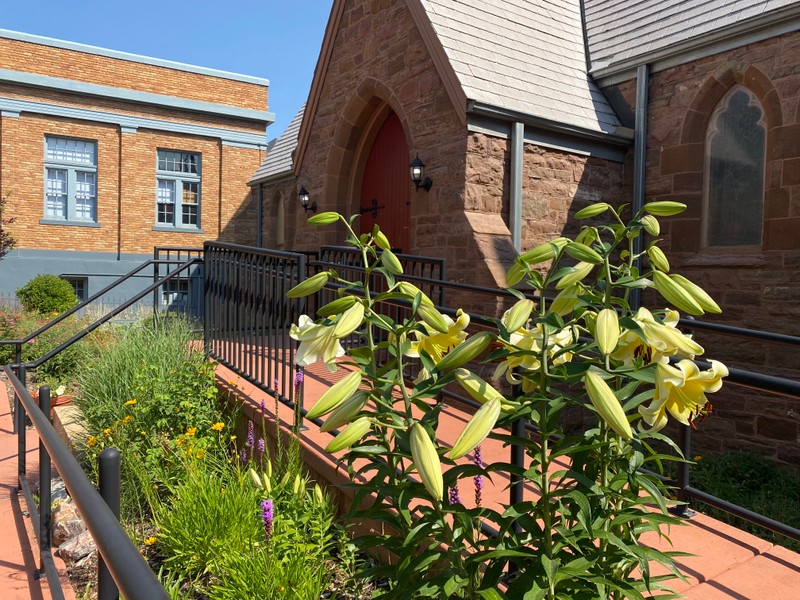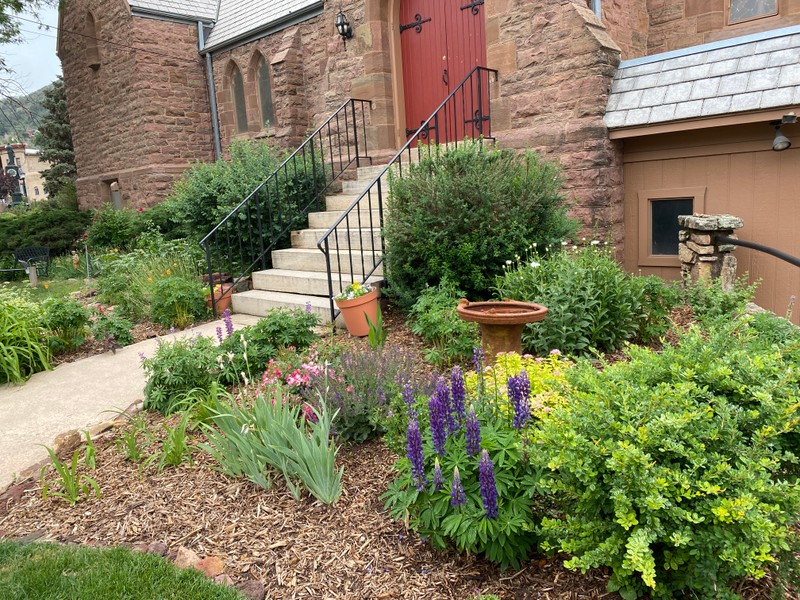St. Andrew's Episcopal Church Gardens
Introduction
Text-to-speech Audio
The St. Andrews Episcopal Church Gardens nearly surround this entire edifice. Both perennial and annual gardens are featured here, as well as raised vegetable beds on the east side of the church. This plot of greenery is lovingly tended to by volunteer patrons of the church. Perennial plants include: lupine, daylily, roses, rocky mountain penstemon, Jupiter's beard, tiger lily, spirea, lavender, snow on the mountain, and juniper trees. Annuals include petunias and pansies, and the vegetable garden features broccoli.
Images
St. Andrew's Episcopal Church Gardens

St. Andrew's Episcopal Church Gardens
.jpg)
St. Andrew's Episcopal Church Gardens
.jpg)
St. Andrew's Episcopal Church Gardens

St. Andrew's Episcopal Church Gardens
.jpg)
Backstory and Context
Text-to-speech Audio
MANITOU SPRINGS POLLINATOR DISTRICT
The creation of this district is an outgrowth of work begun in 2018 by the Manitou Springs Pollinator Project. Their mission is “to enhance the natural environment of Manitou Springs to make it a more pollinator friendly city”. In September of 2019, Manitou Springs City Council Adopted a Resolution Establishing the Commitment to Have a Sustainable Environment and An Ambitious Response to Climate Change for the City of Manitou Springs. The first of seventeen actions states, “Protect pollinators and ecosystem health through reconfirming our commitment to organic land management and, beginning immediately, expand the use of pollinator-friendly plants and practices on City and private properties”. Manitou Springs School District 14 has also committed to supporting this project.
Over the winter of 2018-2019 it was discovered that at least eight beehives in Manitou Springs were abandoned by the bees, or the bees had died inside the hive. Aware that Pollinator populations have been declining nationwide, and that pollinator health and diversity play a critical role in the food supply for wildlife and people, project members researched creating a more robust program. This led to the discovery of a supported Pollinator District Program developed by the Butterfly Pavilion in Westminster, Colorado. https://butterflies.org/copollinatornetwork/. Pollinator Project members are sponsoring Amy Yarger, Horticulture Director of the Butterfly Pavilion, to do a public presentation in Manitou Springs about Pollinator Communities during the month of June, 2020. Our goal is for Manitou Springs to become a Municipal Pollinator District.
What is a Pollinator District?
According to the Colorado Pollinator Network, “A Pollinator District is a community that is absolutely committed to conserving and improving habitat for pollinators in all aspect of operations. A Pollinator District is a development, including businesses, schools, public facilities and parks, designed, constructed and maintained in such a way that pollinator habitat demonstrates a net gain over the footprint of development. A Pollinator District engages all of the people who live, work and play there in this vital work; community members are vital resources who become citizen scientists, beekeepers, gardeners and stewards of the land. A Pollinator District is a long-term commitment, because these habitats and the populations of pollinators that rely on them take years to establish and thrive”.
Sources
Plant list provided by Melody Daugherty 6.11.22.
Joan Stang July 2021
Joan Stang photo May 2022
Joan Stang May 2022
Joan Stang photo June 2022
Joan Stang May 2022
